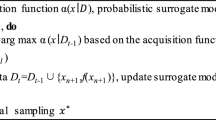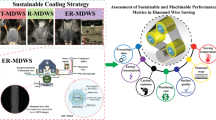Abstract
The combination of feature extraction and classification methods is an often used approach for wafer map failure pattern recognition. Recently, the convolutional neural network (CNN) method is used to raw wafer map data without feature extraction. CNN can improve the accuracy, but the drawback is the expensive computation cost. In our study, we have extracted local property analysis based features and used them with the traditional classification methods, ensemble methods, and CNN for wafer map failure pattern recognition. The decision tree showed better performance than the other methods when evaluating single traditional classification methods. Therefore, we used the decision tree as the base classifier of the proposed ensemble learning. We built a constituent model on a single type of feature set first and then made an ensemble of models to produce the final decision. We found that it is better than directly building a model on total features. Also, we have tested and compared CNN on extracted feature sets and raw wafer map image data. The results showed that raw image based CNN outperforms extracted features under the same number of epochs. However, the training cost of the raw image is much expensive. Furthermore, the performance of extracted features becomes closer to the raw image when increasing the number of epochs with a much lower training cost.















Similar content being viewed by others
References
Adly, F., Alhussein, O., Yoo, P. D., Al-Hammadi, Y., Taha, K., Muhaidat, S., Jeong, Y. S., Lee, U., & Ismail, M. (2015). Simplified subspaced regression network for identification of defect patterns in semiconductor wafer maps. IEEE Transactions on Industrial Informatics, 11(6), 1267–1276.
Adly, F., Yoo, P. D., Muhaidat, S., Al-Hammadi, Y., Lee, U., & Ismail, M. (2015). Randomized general regression network for identification of defect patterns in semiconductor wafer maps. IEEE Transactions on Semiconductor Manufacturing, 28(2), 145–152.
Anthony, M., Bartlett, P.L., & Bartlett, P.L. (1999). Neural network learning: Theoretical foundations, vol. 9. Cambridge University Press
Baly, R., & Hajj, H. (2012). Wafer classification using support vector machines. IEEE Transactions on Semiconductor Manufacturing, 25(3), 373–383.
Belkin, M., & Niyogi, P. (2003). Laplacian eigenmaps for dimensionality reduction and data representation. Neural Computation, 15(6), 1373–1396.
Breiman, L. (2001). Random forests. Machine Learning, 45(1), 5–32.
Chang, C. C., & Lin, C. J. (2011). Libsvm: a library for support vector machines. ACM Transactions on Intelligent Systems and Technology, 2(3), 1–27.
Chen, F. L., & Liu, S. F. (2000). A neural-network approach to recognize defect spatial pattern in semiconductor fabrication. IEEE Transactions on Semiconductor Manufacturing, 13(3), 366–373.
Chen, S., Zhang, Y., Yi, M., Shang, Y., & Yang, P. (2021). AI classification of wafer map defect patterns by using dual-channel convolutional neural network. Engineering Failure Analysis, 130, 105756.
Chien, C. F., Wang, W. C., & Cheng, J. C. (2007). Data mining for yield enhancement in semiconductor manufacturing and an empirical study. Expert Systems with Applications, 33(1), 192–198.
Chien, J. C., Wu, M. T., & Lee, J. D. (2020). Inspection and classification of semiconductor wafer surface defects using cnn deep learning networks. Applied Sciences, 10(15), 5340.
Choi, G., Kim, S. H., Ha, C., & Bae, S. J. (2012). Multi-step art1 algorithm for recognition of defect patterns on semiconductor wafers. International Journal of Production Research, 50(12), 3274–3287.
Fan, M., Wang, Q., & van der Waal, B. (2016). Wafer defect patterns recognition based on optics and multi-label classification. In: 2016 IEEE Advanced Information Management, Communicates, Electronic and Automation Control Conference, pp. 912–915. IEEE
Guh, R. S. (2007). On-line identification and quantification of mean shifts in bivariate processes using a neural network-based approach. Quality and Reliability Engineering International, 23(3), 367–385.
Hassani, S. (2009). Dirac delta function. In: Mathematical Methods, pp. 139–170. Springer
Helgason, S., & Helgason, S. (1980). The radon transform, vol. 2. Springer
Huang, C. J. (2007). Clustered defect detection of high quality chips using self-supervised multilayer perceptron. Expert Systems with Applications, 33(4), 996–1003.
Huang, T., Yang, G., & Tang, G. (1979). A fast two-dimensional median filtering algorithm. IEEE Transactions on Acoustics, Speech, and Signal Processing, 27(1), 13–18.
Illingworth, J., & Kittler, J. (1988). A survey of the hough transform. Computer Vision, Graphics, and Image Processing, 44(1), 87–116.
Jang, R.: MIR-WM811K data, MIR lab (2022). http://mirlab.org/dataSet/public/
Jin, C. H., Kim, H. J., Piao, Y., Li, M., & Piao, M. (2020). Wafer map defect pattern classification based on convolutional neural network features and error-correcting output codes. Journal of Intelligent Manufacturing, 31(8), 1861–1875.
Jin, C. H., Na, H. J., Piao, M., Pok, G., & Ryu, K. H. (2019). A novel dbscan-based defect pattern detection and classification framework for wafer bin map. IEEE Transactions on Semiconductor Manufacturing, 32(3), 286–292.
Kang, H., & Kang, S. (2021). A stacking ensemble classifier with handcrafted and convolutional features for wafer map pattern classification. Computers in Industry, 129, 103450.
Kim, B., Jeong, Y. S., Tong, S. H., Chang, I. K., & Jeongyoung, M. K. (2015). A regularized singular value decomposition-based approach for failure pattern classification on fail bit map in a dram wafer. IEEE Transactions on Semiconductor Manufacturing, 28(1), 41–49.
Menard, S. (2002). Applied logistic regression analysis. 106. Sage
Mohanaiah, P., Sathyanarayana, P., & GuruKumar, L. (2013). Image texture feature extraction using glcm approach. International Journal of Scientific and Research Publications, 3(5), 1–5.
Ooi, M. P. L., Sok, H. K., Kuang, Y. C., Demidenko, S., & Chan, C. (2013). Defect cluster recognition system for fabricated semiconductor wafers. Engineering Applications of Artificial Intelligence, 26(3), 1029–1043.
Piao, M., Jin, C. H., Lee, J. Y., & Byun, J. Y. (2018). Decision tree ensemble-based wafer map failure pattern recognition based on radon transform-based features. IEEE Transactions on Semiconductor Manufacturing, 31(2), 250–257.
Quinlan, J.R. (1993). C4.5: Programs for machine learning. Morgan Kaufmann Publishers
Roweis, S. T., & Saul, L. K. (2000). Nonlinear dimensionality reduction by locally linear embedding. Science, 290(5500), 2323–2326.
Saqlain, M., Abbas, Q., & Lee, J. Y. (2020). A deep convolutional neural network for wafer defect identification on an imbalanced dataset in semiconductor manufacturing processes. IEEE Transactions on Semiconductor Manufacturing, 33(3), 436–444.
Saqlain, M., Jargalsaikhan, B., & Lee, J. Y. (2019). A voting ensemble classifier for wafer map defect patterns identification in semiconductor manufacturing. IEEE Transactions on Semiconductor Manufacturing, 32(2), 171–182.
Shon, H. S., Batbaatar, E., Cho, W. S., & Choi, S. G. (2021). Unsupervised pre-training of imbalanced data for identification of wafer map defect patterns. IEEE Access, 9, 52352–52363.
Sugiyama, M. (2007). Dimensionality reduction of multimodal labeled data by local fisher discriminant analysis. Journal of Machine Learning Research 8(5)
Tan, P., Steinbach, M., & Kumar, V. (2006). Ensemble methods. In: Introduction to Data Mining. Pearson Education
Tan, S. C., Watada, J., Ibrahim, Z., & Khalid, M. (2014). Evolutionary fuzzy artmap neural networks for classification of semiconductor defects. IEEE Transactions on Neural Networks and Learning Systems, 26(5), 933–950.
Tenenbaum, J. B., De Silva, V., & Langford, J. C. (2000). A global geometric framework for nonlinear dimensionality reduction. Science, 290(5500), 2319–2323.
Wang, C. H., Wang, S. J., & Lee, W. D. (2006). Automatic identification of spatial defect patterns for semiconductor manufacturing. International Journal of Production Research, 44(23), 5169–5185.
Wang, R., & Chen, N. (2020). Defect pattern recognition on wafers using convolutional neural networks. Quality and Reliability Engineering International, 36(4), 1245–1257.
Wu, M. J., Jang, J. S. R., & Chen, J. L. (2014). Wafer map failure pattern recognition and similarity ranking for large-scale data sets. IEEE Transactions on Semiconductor Manufacturing, 28(1), 1–12.
Yu, J. (2011a). Bearing performance degradation assessment using locality preserving projections and gaussian mixture models. Mechanical Systems and Signal Processing, 25(7), 2573–2588.
Yu, J. (2011b). Fault detection using principal components-based gaussian mixture model for semiconductor manufacturing processes. IEEE Transactions on Semiconductor Manufacturing, 24(3), 432–444.
Yu, J. (2012). Semiconductor manufacturing process monitoring using gaussian mixture model and bayesian method with local and nonlocal information. IEEE Transactions on Semiconductor Manufacturing, 25(3), 480–493.
Yu, J., Li, S., Shen, Z., Wang, S., Liu, C., & Li, Q. (2021a). Deep transfer wasserstein adversarial network for wafer map defect recognition. Computers and Industrial Engineering, 161, 107679.
Yu, J., & Liu, J. (2020). Two-dimensional principal component analysis-based convolutional autoencoder for wafer map defect detection. IEEE Transactions on Industrial Electronics, 68(9), 8789–8797.
Yu, J., & Lu, X. (2015). Wafer map defect detection and recognition using joint local and nonlocal linear discriminant analysis. IEEE Transactions on Semiconductor Manufacturing, 29(1), 33–43.
Yu, J., Shen, Z., & Wang, S. (2021b). Wafer map defect recognition based on deep transfer learning-based densely connected convolutional network and deep forest. Engineering Applications of Artificial Intelligence, 105, 104387.
Yuan, T., Kuo, W., & Bae, S. J. (2011). Detection of spatial defect patterns generated in semiconductor fabrication processes. IEEE Transactions on Semiconductor Manufacturing, 24(3), 392–403.
Acknowledgements
This research was supported by Project Funded by the Priority Academic Program Development of Jiangsu Higher Education Institutions, and by Collaborative Innovation Center of Novel Software Technology and Industrialization, Soochow University.
Author information
Authors and Affiliations
Corresponding author
Additional information
Publisher's Note
Springer Nature remains neutral with regard to jurisdictional claims in published maps and institutional affiliations.
Rights and permissions
Springer Nature or its licensor holds exclusive rights to this article under a publishing agreement with the author(s) or other rightsholder(s); author self-archiving of the accepted manuscript version of this article is solely governed by the terms of such publishing agreement and applicable law.
About this article
Cite this article
Piao, M., Jin, C.H. CNN and ensemble learning based wafer map failure pattern recognition based on local property based features. J Intell Manuf 34, 3599–3621 (2023). https://doi.org/10.1007/s10845-022-02023-x
Received:
Accepted:
Published:
Issue Date:
DOI: https://doi.org/10.1007/s10845-022-02023-x




